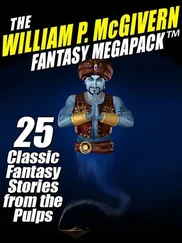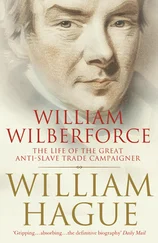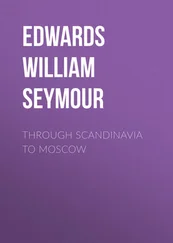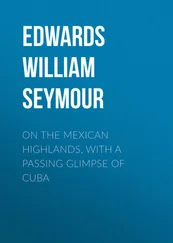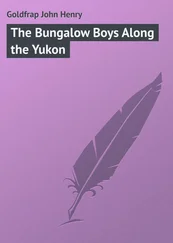William Edwards - In to the Yukon
Здесь есть возможность читать онлайн «William Edwards - In to the Yukon» — ознакомительный отрывок электронной книги совершенно бесплатно, а после прочтения отрывка купить полную версию. В некоторых случаях можно слушать аудио, скачать через торрент в формате fb2 и присутствует краткое содержание. Жанр: foreign_antique, foreign_prose, Путешествия и география, на английском языке. Описание произведения, (предисловие) а так же отзывы посетителей доступны на портале библиотеки ЛибКат.
- Название:In to the Yukon
- Автор:
- Жанр:
- Год:неизвестен
- ISBN:нет данных
- Рейтинг книги:4 / 5. Голосов: 1
-
Избранное:Добавить в избранное
- Отзывы:
-
Ваша оценка:
- 80
- 1
- 2
- 3
- 4
- 5
In to the Yukon: краткое содержание, описание и аннотация
Предлагаем к чтению аннотацию, описание, краткое содержание или предисловие (зависит от того, что написал сам автор книги «In to the Yukon»). Если вы не нашли необходимую информацию о книге — напишите в комментариях, мы постараемся отыскать её.
In to the Yukon — читать онлайн ознакомительный отрывок
Ниже представлен текст книги, разбитый по страницам. Система сохранения места последней прочитанной страницы, позволяет с удобством читать онлайн бесплатно книгу «In to the Yukon», без необходимости каждый раз заново искать на чём Вы остановились. Поставьте закладку, и сможете в любой момент перейти на страницу, на которой закончили чтение.
Интервал:
Закладка:
We are tied to an immense pier, and mechanical lifters seem to be dragging out the very entrails of the ship. Across the line of the warehouses I see the trucks of the railway, the hackmen are crying out their hotels. “This way, free ’bus to the Fifth Avenue Hotel.”
FIFTH LETTER
SKAGWAY, CARIBOU CROSSING 1 1 Caribou Crossing now called Carcross.
AND ATLIN
Here we are at the mining camp of Atlin, on Atlin Lake. We left Skagway the same morning we arrived. Our boat, the “City of Seattle,” came in early Wednesday morning, and long before we got up we heard them discharging cargo, all hands at work. The day was cloudy, cold, and icy winds swept down from the glaciers. It seemed November. The little town is built on a low sand tongue of detritus carried down from the glaciers by the snow rivers, the river Skagway here pouring out a flood of muddy white water like the Swiss streams.
The railway is a narrow, three-foot gauge, and the cars are low but roomy. Our train consisted of nine freight cars, a baggage, two passenger cars and three locomotives, one in front and two in the middle. The famous ride was all that has been said of it. First, a gradual ascent up the deep valley of the Skagway, then steep climbing and many doubles and winds up through the cañon to the summit, twenty miles away, and 3,200 feet above the sea. In many places the road-bed is blasted out of the granite rock, sheer precipices above and below, a most costly piece of work, and ever down below winds the difficult, dangerous trail, over which fifty to one hundred thousand men and women footed it in the winters of 1897–1898, in the strange, mad world-rush to the fabulous gold fields of the interior. How they got up and through at all is the wonder; yet men tell me that men, pack-laden, footsore, determined, were so closely massed along the trail that it was one continuous line from Skagway to summit and beyond, for months at a time. The various views from our car were magnificent and even appalling; sometimes we seemed to hang in mid-air as we crawled upward. As we approached the summit we came among snow fields and near many glaciers, and then passed through long snow-sheds over which the avalanches often slip and thunder into the abysses below.
Near the divide is the international boundary line, and the customs station for Alaska and the Yukon Territory of Canada, and where the red-coated Canadian mounted police come first in evidence. Here our bags were examined by the customs. Then we began a gradual descent into wide, open, flat valleys, over bare granite rock masses and through a stunted fir wilderness into the basin of the Yukon, 2,600 miles from the Behring Sea at St. Michaels. Flocks of ptarmigan flew up as the train rolled down, and a few eagles soared high above the snow summits.
Our first stop was at a railway eating-house near the head of Lake Bennett, a sheet of light green water, two to ten miles wide and over thirty miles long, all shut in by gigantic granite mountains whose summits were covered with glittering snow. The railway skirts the water for the entire distance until it crosses at a bridge over a swift current where Lake Bennett flows into Lake Marsh, and where is the station of Caribou.
Here we were put off, and here we would, two days later, take the bi-weekly steamer for Atlin, on Atlin Lake, where we now are, and here the railway leaves the lakes and takes a short cut across a low divide to White Horse Rapids, where begins the steamboat navigation on the Yukon River.
Caribou is a collection of cabins and tents, and is the first settlement where, they say, will some day be a city.
It was on Lake Bennett that the weary pilgrims used to camp to build their boats and rafts and begin their long water journey of five hundred miles to Dawson and the golden Klondike.
Our hotel we found surprisingly neat and clean; owned and kept by a famous Indian, “Dawson Charlie,” who was one of the discoverers of the gold of Bonanza Creek in the Klondike, and who had the sense to himself stake out several claims, the gold from which has made him now a magnate worth several hundred thousand dollars, and who lives and entertains like a white man. He housed us in a neat, comfortable room, iron bedstead, wire mattress, carpeted floor. He fed us at fifty cents a meal as well, as abundantly as in West Virginia, and only his Indian daughter, who waited on us, dressed neatly and fashionably, with big diamonds in her ears, made us realize that we were not in our own land. Here we have spent two delightful days. The air is as wonderfully clear as on the table-lands of Mexico, full of ozone, but cold in the shadow even in midday, though the sun is warm.
On the ship we met a delightful naturalist, Mr. Baldwin, of New Haven, artist of the U. S. Fish Commission, and who came with us to try and catch some grayling, in order to make drawings for the Commission, and for two days we have been out in the woods, he with my rod, H – with your butterfly net, and I with my gun. He caught his grayling, several of them. I shot several mallard ducks, but H – caught no butterflies, nor saw one. It was too late in the season for that.
On the way up we fell in with a very intelligent Swede, whose partner in the Klondike is a Dane, and who, when he learned H – ’s nationality, and she had talked Danish with him, was all courtesy and friendliness. He had come in with the “mushers” (corruption of the French marche ), as the early foot-farers are called, and had succeeded. When we get to Dawson he will welcome us.
At Caribou we also made acquaintance with the Canadian customs officer, Mr. John Turnure, a fine type of Canadian official, big, bluff, yet courteous, who at first was going to tax all my cartridges and kodak films, notwithstanding I had passed the customs at Winnipeg and had come from Vancouver direct, but who, upon explanation, relented, and afterward called on us and invited H – , Mr. B – and myself to call on his wife and family at his log cabin mansion near the station, which we did, and were served cake and coffee from dainty china, and sat on a divan covered with priceless furs, near a good piano. His daughters were now at home from school on vacation, and his wife, a cultured woman, was next day going with them on a shopping visit to Dawson, the New York or Cincinnati of this far north.
The Yukon territory is governed from Ottawa by appointees, and policed by the “Northwest Mounted Police,” a fine body of men – including many young Englishmen of good family – in cowboy hats and red coats. While here in Atlin, we are just over the line in the Province of British Columbia, a state with its own laws and civil magistrates.
We left Caribou on a little steamer with a big sternwheel – all of which, timber and machinery, had been carried from Skagway over the White Pass on horses’ backs, and sledges, dragged by men and dogs, and put together on Lake Bennett, before the railway was even thought of. How in the name of heaven a ten-ton boiler, and the engines and big timbers, were got over that foot-path trail, is even yet a standing marvel – the boat is as big as the steamer “Calvert” on the Kanawha River – but it was done, and to-day I have talked with the man who bossed and directed the job, Captain Irving, now a gold hunter of Atlin and a member of the British Columbia Parliament.
We first came slowly through a well-marked track on a little lake, Lake Marsh, for about ten miles, then through a short river, and then out into Lake Taggish, a sheet of water larger than Lake Bennett, and one arm of which is famous for its desperate winds from the glaciers – the “hurricane” arm – another arm of which heads toward the White Horse Rapids, and a third arm, “The Taku Arm,” which extends southerly toward Lake Atlin, a lake more than one hundred miles in length, which empties into it through a short, swift, turbulent river. This southerly portion of the lake is eight or ten miles wide and we were all night steaming on it to Taku, where we landed this morning – a distance of forty or fifty miles – when, taking a little, short, two-mile railway, we were pulled over to Atlin Lake, a yet bigger body of water. There embarking on another steamboat, we were ferried ten miles across to Atlin, a town with a courthouse, several churches, a little hospital, a newspaper, a bank, a dozen hotels, a multitude of restaurants, bicycles, numerous livery stables, and which is the center of a gold-mining region from which already several millions of dollars have been taken since the first pay dirt was found in 1898. We dined at a restaurant where a colored French cook presides, and you may have any delicacy New York could afford. At the bars men preside with diamonds the size of hickory nuts in their shirts, drinks are twenty-five cents each and cigars the same. The hotels are full of keen-faced men; well-gowned and refined women are to be seen on the streets; the baby carriages are pulled by great big dogs, and even the water carts and delivery wagons are hauled by teams of eight and ten dogs – Newfoundland or wolfish Esquimaux.
Читать дальшеИнтервал:
Закладка:
Похожие книги на «In to the Yukon»
Представляем Вашему вниманию похожие книги на «In to the Yukon» списком для выбора. Мы отобрали схожую по названию и смыслу литературу в надежде предоставить читателям больше вариантов отыскать новые, интересные, ещё непрочитанные произведения.
Обсуждение, отзывы о книге «In to the Yukon» и просто собственные мнения читателей. Оставьте ваши комментарии, напишите, что Вы думаете о произведении, его смысле или главных героях. Укажите что конкретно понравилось, а что нет, и почему Вы так считаете.

